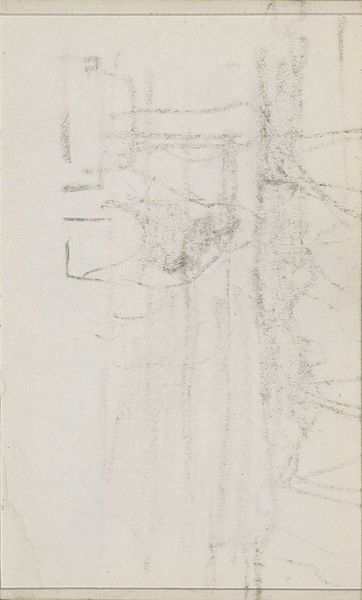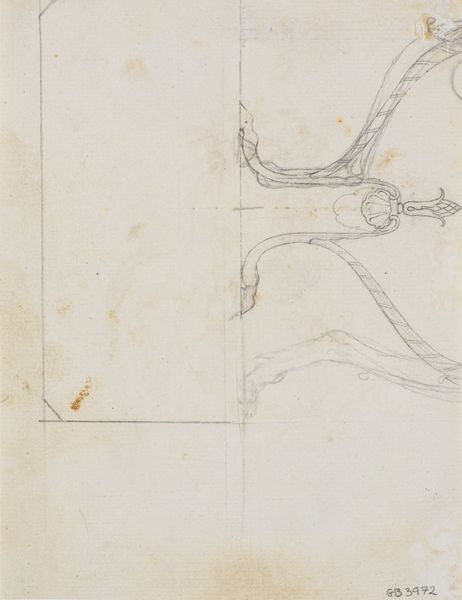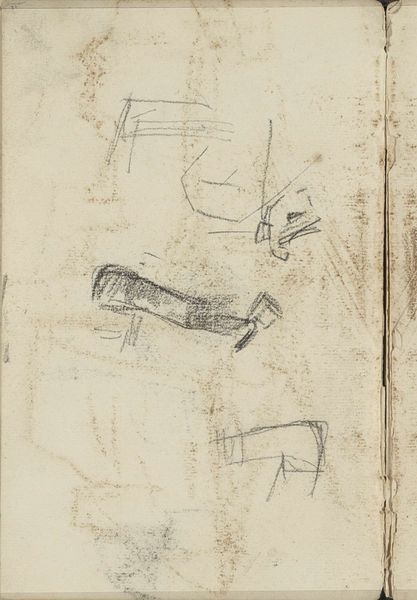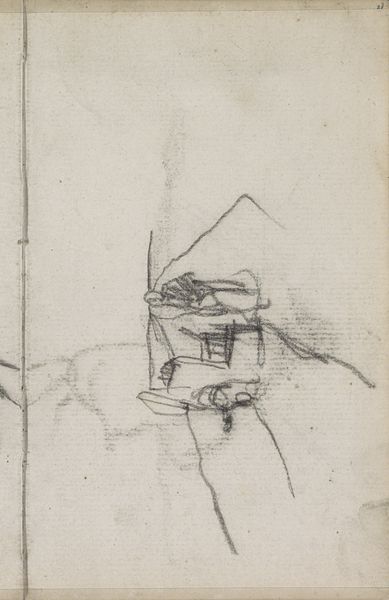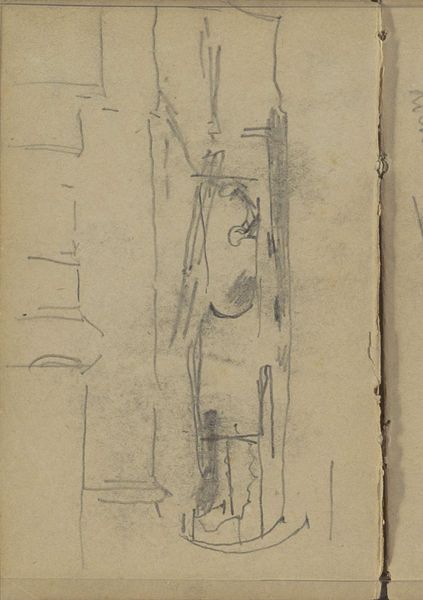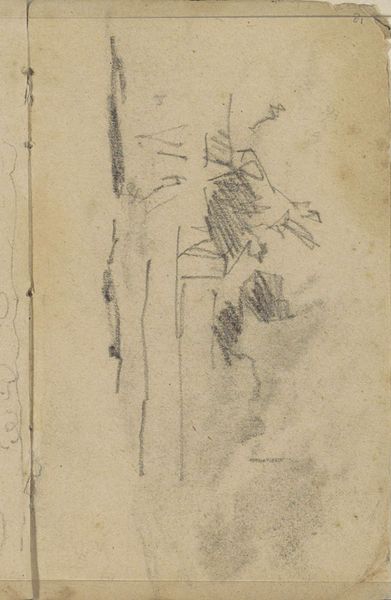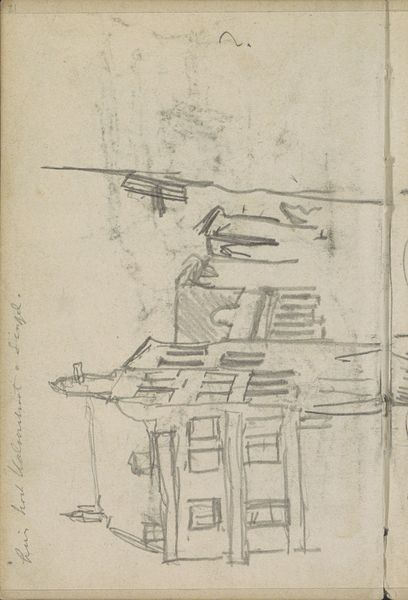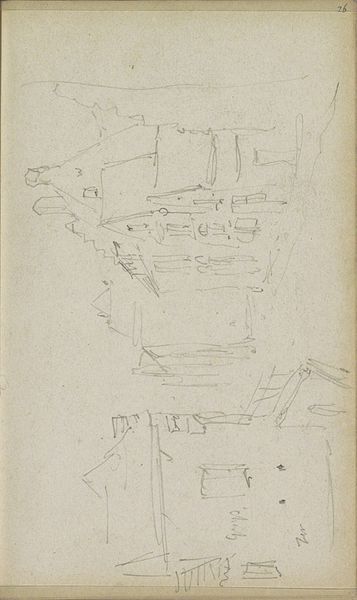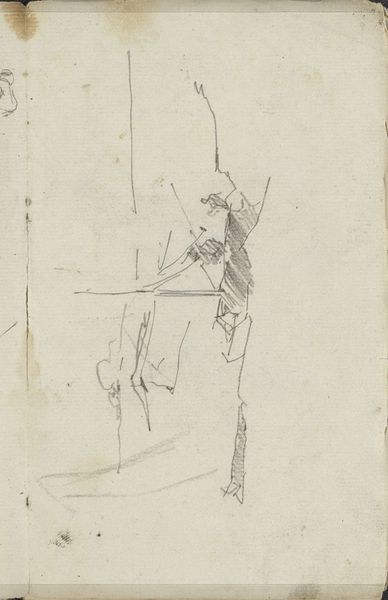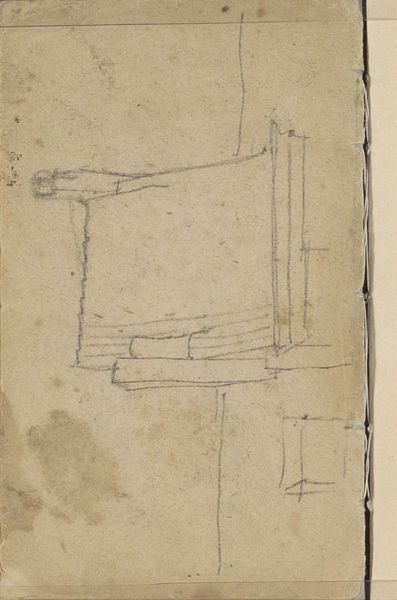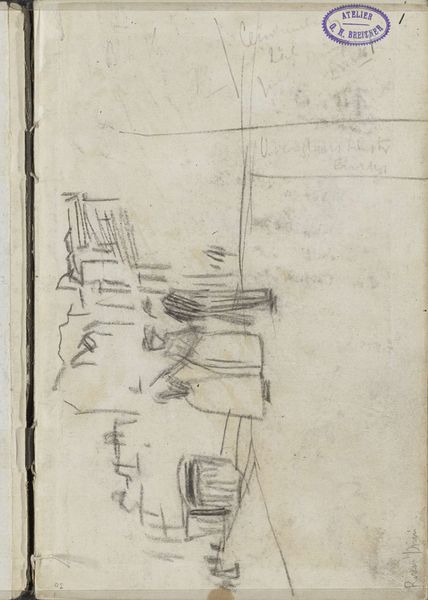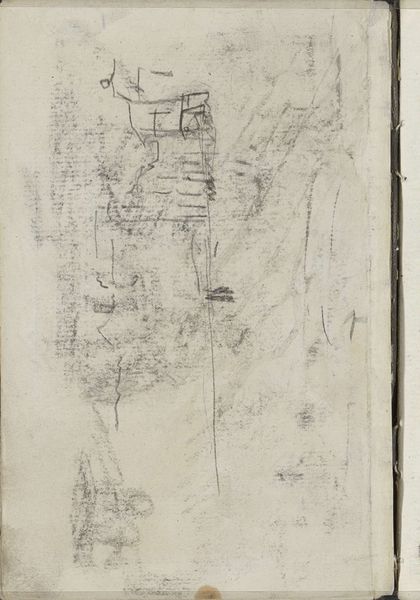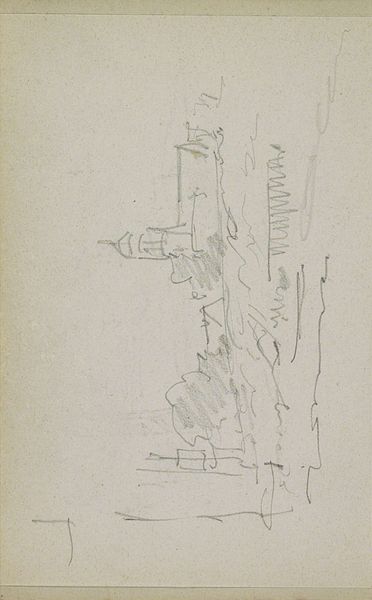
drawing, paper, pencil
#
portrait
#
drawing
#
impressionism
#
landscape
#
paper
#
pencil
#
realism
Copyright: Rijks Museum: Open Domain
Curator: Immediately, there’s a certain unfinished quality that invites the viewer in; it's almost dreamlike. Editor: This is a pencil drawing on paper from the Rijksmuseum, titled *Boeren en boerinnen op het land,* or *Farmers and Farm Women in the Field,* dating from 1884-1886 and made by George Hendrik Breitner. For me, the power lies in the way he depicts labour, the physical exertion implied even in these few, spare lines. Curator: Breitner certainly captured something essential in that labour, the rhythmic and repetitive movements. Notice how the figures almost blend with the earth; this echoes ancient artistic conventions. Editor: Exactly. The medium itself also suggests something – humble graphite on relatively inexpensive paper. It makes me wonder if this was a preparatory sketch, a casual observation quickly rendered as opposed to a highly valued product meant for collecting. Curator: It feels more primal in that sense. It’s the bare bones of an image, hinting at enduring archetypes - toil, connection to the land... Perhaps even touching on the weight of generational heritage. Editor: Or consider the opposite – is it just capturing a passing moment, a scene from daily life sketched with great speed and precision? How did the social status of agricultural labor play into how he selected this subject, and how does it resonate with an urban audience looking at it in the museum? Curator: Well, those sharp, decisive pencil strokes—some faces only hinted at—almost convey the emotional realities inherent to agricultural existence. Thinkers like Jung might find evidence of collective understanding etched within these figures and lines. Editor: Agreed; looking at this I keep coming back to the sheer economy of mark-making, the question of where this work fits into a cycle of artistic production, what labor went into it and whose labor is being depicted. Curator: It gives us a deeper sense, almost unconsciously, of the universality of that toil and connection to nature, stretching back into our ancestral memory. Editor: Yes, seeing these outlines sketched gives me something concrete to consider: materials used, processes undertaken, the labor expended and how the historical status of those working might alter how it is interpreted and consumed today.
Comments
No comments
Be the first to comment and join the conversation on the ultimate creative platform.
